Obstetric implications of maternal chronic hepatitis B virus infection
Antenatal screening for hepatitis B surface antigen seropositivity is widely adopted to identify pregnant women with chronic hepatitis B virus (HBV) infection in order to target their newborn infants for combined passive-active ne
[...] Read more.
Antenatal screening for hepatitis B surface antigen seropositivity is widely adopted to identify pregnant women with chronic hepatitis B virus (HBV) infection in order to target their newborn infants for combined passive-active neonatal immunization to prevent the maternal-to-child transmission of HBV. It is less certain whether the presence of chronic HBV infection in these largely asymptomatic women could impact their pregnancy outcome. There is now gathering information in the literature, though sometimes conflicting, on the obstetric implications of chronic HBV infection. The conflicting data is most probably related to confounding factors such as the immunological phase of chronic HBV infection, viral genotype and activity, presence of hepatic inflammation and other co-existing liver disorders such as non-alcoholic fatty liver disease, and coinfection with other virus such as hepatitis C virus and micro-organisms, which are usually not examined, but which could have made significant influence on the occurrence of many of the pregnancy complications and adverse fetal and neonatal outcome. For pregnancy complications, the evidence suggests association with increased gestational diabetes mellitus, preterm birth, intrahepatic cholestasis of pregnancy, caesarean delivery, and postpartum haemorrhage, probably increased placental abruption and prelabour rupture of the membranes, and no effect or a reduction in the hypertensive disorders of pregnancy, especially preeclampsia. For perinatal outcome, there may be increased miscarriage and fetal malformations, and increase in both low birthweight and large-for-gestational age/macrosomic infants, as well as increased intrauterine fetal demise/stillbirth and fetal distress. However, most studies have not elaborated on the mechanisms or explanations of many of the adverse outcomes. Taken together, maternal chronic HBV infection increases the risk of adverse obstetric outcome overall, but further prospective studies are warranted to elucidate the reasons and mechanisms of, and with a view to mitigating, these adverse obstetric outcomes.
Terence T. Lao
Antenatal screening for hepatitis B surface antigen seropositivity is widely adopted to identify pregnant women with chronic hepatitis B virus (HBV) infection in order to target their newborn infants for combined passive-active neonatal immunization to prevent the maternal-to-child transmission of HBV. It is less certain whether the presence of chronic HBV infection in these largely asymptomatic women could impact their pregnancy outcome. There is now gathering information in the literature, though sometimes conflicting, on the obstetric implications of chronic HBV infection. The conflicting data is most probably related to confounding factors such as the immunological phase of chronic HBV infection, viral genotype and activity, presence of hepatic inflammation and other co-existing liver disorders such as non-alcoholic fatty liver disease, and coinfection with other virus such as hepatitis C virus and micro-organisms, which are usually not examined, but which could have made significant influence on the occurrence of many of the pregnancy complications and adverse fetal and neonatal outcome. For pregnancy complications, the evidence suggests association with increased gestational diabetes mellitus, preterm birth, intrahepatic cholestasis of pregnancy, caesarean delivery, and postpartum haemorrhage, probably increased placental abruption and prelabour rupture of the membranes, and no effect or a reduction in the hypertensive disorders of pregnancy, especially preeclampsia. For perinatal outcome, there may be increased miscarriage and fetal malformations, and increase in both low birthweight and large-for-gestational age/macrosomic infants, as well as increased intrauterine fetal demise/stillbirth and fetal distress. However, most studies have not elaborated on the mechanisms or explanations of many of the adverse outcomes. Taken together, maternal chronic HBV infection increases the risk of adverse obstetric outcome overall, but further prospective studies are warranted to elucidate the reasons and mechanisms of, and with a view to mitigating, these adverse obstetric outcomes.
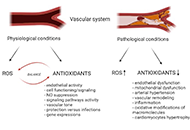 Antioxidant enzymes and vascular diseasesOpen AccessReviewReactive oxygen species (ROS) and reactive nitrogen species (RNS) play a fundamental role in regulating endothelial function and vascular tone in the physiological conditions of a vascular system. However, oxidative stress has det [...] Read more.Jelena Radovanovic ... Esma R. IsenovicPublished: December 31, 2021 Explor Med. 2021;2:544–555
Antioxidant enzymes and vascular diseasesOpen AccessReviewReactive oxygen species (ROS) and reactive nitrogen species (RNS) play a fundamental role in regulating endothelial function and vascular tone in the physiological conditions of a vascular system. However, oxidative stress has det [...] Read more.Jelena Radovanovic ... Esma R. IsenovicPublished: December 31, 2021 Explor Med. 2021;2:544–555 A global genetic epidemiological review of pseudoexfoliation syndromeOpen AccessReviewPseudoexfoliation (PXF) syndrome is an important public health concern requiring individual population level analysis. Disease prevalence differs by geographic location and ethnicity, and has environmental, demographic, genetic, a [...] Read more.Patrice M. Hicks ... Margaret M. DeAngelisPublished: December 31, 2021 Explor Med. 2021;2:527–543
A global genetic epidemiological review of pseudoexfoliation syndromeOpen AccessReviewPseudoexfoliation (PXF) syndrome is an important public health concern requiring individual population level analysis. Disease prevalence differs by geographic location and ethnicity, and has environmental, demographic, genetic, a [...] Read more.Patrice M. Hicks ... Margaret M. DeAngelisPublished: December 31, 2021 Explor Med. 2021;2:527–543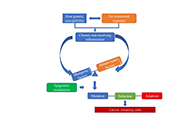 Key roles of CCCTC-binding factor in cancer evolution and developmentOpen AccessReviewThe processes of cancer and embryonic development have a partially overlapping effect. Several transcription factor families, which are highly conserved in the evolutionary history of biology, play a key role in the development of [...] Read more.Zishuai Li ... Guangwen CaoPublished: December 31, 2021 Explor Med. 2021;2:516–526
Key roles of CCCTC-binding factor in cancer evolution and developmentOpen AccessReviewThe processes of cancer and embryonic development have a partially overlapping effect. Several transcription factor families, which are highly conserved in the evolutionary history of biology, play a key role in the development of [...] Read more.Zishuai Li ... Guangwen CaoPublished: December 31, 2021 Explor Med. 2021;2:516–526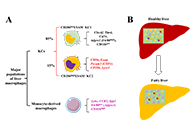 Functions of two distinct Kupffer cells in the liverOpen AccessCommentaryTissue-resident macrophages play critically important roles in host homeostasis and pathogenesis of diseases, with the functions of phagocytosis, metabolism, and immune modulation. Recently, two research studies accomplished by a [...] Read more.Chunye Zhang ... Ming YangPublished: December 31, 2021 Explor Med. 2021;2:511–515
Functions of two distinct Kupffer cells in the liverOpen AccessCommentaryTissue-resident macrophages play critically important roles in host homeostasis and pathogenesis of diseases, with the functions of phagocytosis, metabolism, and immune modulation. Recently, two research studies accomplished by a [...] Read more.Chunye Zhang ... Ming YangPublished: December 31, 2021 Explor Med. 2021;2:511–515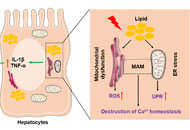 Molecular targets regulating endoplasmic reticulum-mitochondria crosstalk for NAFLD treatmentOpen AccessReviewNon-alcoholic fatty liver disease (NAFLD) as the most common chronic liver disease poses a significant impact on public healthcare and economic risk worldwide. As a multifactorial disease, NAFLD is usually associated with many com [...] Read more.Chunye Zhang, Ming YangPublished: December 31, 2021 Explor Med. 2021;2:494–510
Molecular targets regulating endoplasmic reticulum-mitochondria crosstalk for NAFLD treatmentOpen AccessReviewNon-alcoholic fatty liver disease (NAFLD) as the most common chronic liver disease poses a significant impact on public healthcare and economic risk worldwide. As a multifactorial disease, NAFLD is usually associated with many com [...] Read more.Chunye Zhang, Ming YangPublished: December 31, 2021 Explor Med. 2021;2:494–510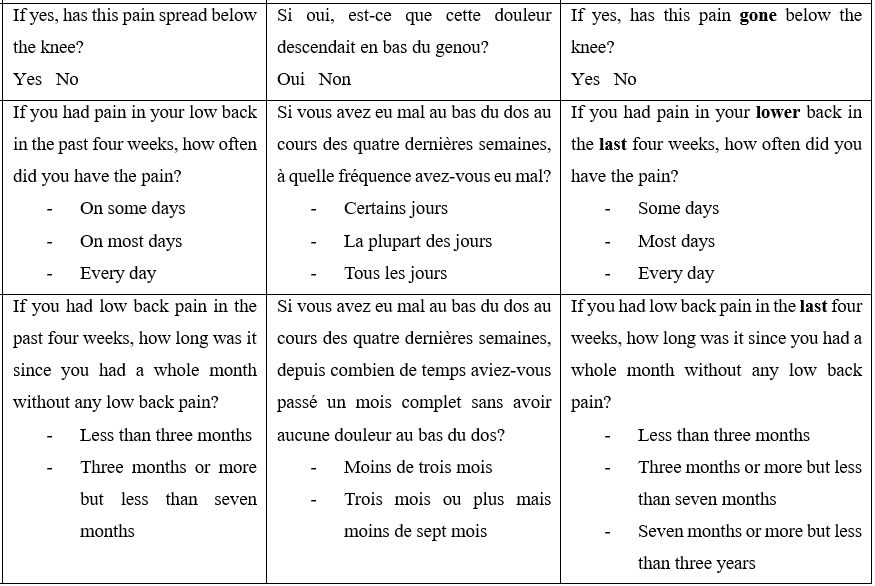 Cross-cultural adaptation of Delphi definitions of low back pain prevalence in French (Delphi DOLBaPP-F)Open AccessOriginal ArticleAim: The high heterogeneity in the definitions of low back pain encountered in the literature has led to the development of standardized definitions of this condition called “Delphi definitions of low back pain prevalence (D [...] Read more.Antarou Ly ... Clermont E. DionnePublished: December 31, 2021 Explor Med. 2021;2:483–493
Cross-cultural adaptation of Delphi definitions of low back pain prevalence in French (Delphi DOLBaPP-F)Open AccessOriginal ArticleAim: The high heterogeneity in the definitions of low back pain encountered in the literature has led to the development of standardized definitions of this condition called “Delphi definitions of low back pain prevalence (D [...] Read more.Antarou Ly ... Clermont E. DionnePublished: December 31, 2021 Explor Med. 2021;2:483–493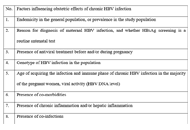 Obstetric implications of maternal chronic hepatitis B virus infectionOpen AccessReviewAntenatal screening for hepatitis B surface antigen seropositivity is widely adopted to identify pregnant women with chronic hepatitis B virus (HBV) infection in order to target their newborn infants for combined passive-active ne [...] Read more.Terence T. LaoPublished: December 31, 2021 Explor Med. 2021;2:468–482
Obstetric implications of maternal chronic hepatitis B virus infectionOpen AccessReviewAntenatal screening for hepatitis B surface antigen seropositivity is widely adopted to identify pregnant women with chronic hepatitis B virus (HBV) infection in order to target their newborn infants for combined passive-active ne [...] Read more.Terence T. LaoPublished: December 31, 2021 Explor Med. 2021;2:468–482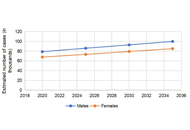 Future incidence and mortality of colorectal carcinoma in the United States: an updated overview of risk factors and preventative measuresOpen AccessReviewAccording to the Global Cancer Observatory (GLOBOCAN) 2020, colorectal carcinoma (CRC) was the second leading cause of cancer death globally. Current literature utilizes reported databases such as Surveillance, Epidemiology, and E [...] Read more.Hassam AliPublished: December 31, 2021 Explor Med. 2021;2:455–467
Future incidence and mortality of colorectal carcinoma in the United States: an updated overview of risk factors and preventative measuresOpen AccessReviewAccording to the Global Cancer Observatory (GLOBOCAN) 2020, colorectal carcinoma (CRC) was the second leading cause of cancer death globally. Current literature utilizes reported databases such as Surveillance, Epidemiology, and E [...] Read more.Hassam AliPublished: December 31, 2021 Explor Med. 2021;2:455–467